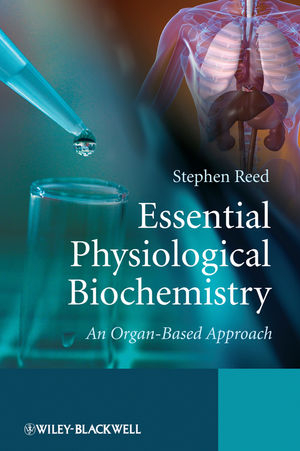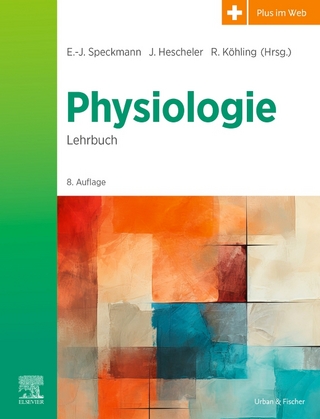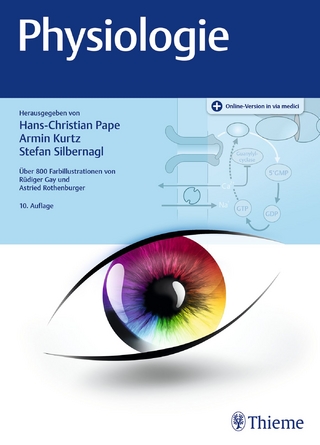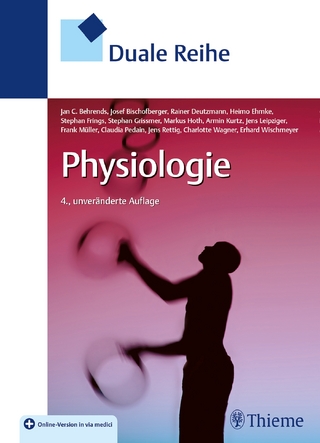
Essential Physiological Biochemistry
An Organ-Based Approach
Seiten
2009
John Wiley & Sons Inc (Verlag)
978-0-470-02636-6 (ISBN)
John Wiley & Sons Inc (Verlag)
978-0-470-02636-6 (ISBN)
.. An accessible engaging primer that describes biochemical processes within a physiological framework. .. Assumes only a basic understanding of chemistry and focuses on helping the reader to understand key concepts.
This text provides a fresh, accessible introduction to human metabolism that shows how the physiological actions of selected organs can be explained by their particular biochemical processes. Focusing on metabolic integration, rather than pathways, this book opens with three introductory chapters that explore the principles of metabolism and its control before moving onto ‘themed’ chapters that investigate liver, communication systems (endocrine and neurological), blood and vascular system, muscle and adipose tissue and renal biochemistry.
Targeted at non-biochemistry majors who need to get to grips with key biochemical concepts and ideas, this textbook is an essential guide for all undergraduate biomedical science, sports science, nutrition and other allied health students.
Key features:
A fresh, accessible primer that adopts a unique, organ-system based approach to human metabolism.
Assumes only a basic understanding of chemistry.
Chapters are arranged specifically to enable readers to grasp key concepts and to aid understanding.
Some chapters include ‘Case Notes, illustrating key aspects of metabolism in cells, tissues and organs.
This text provides a fresh, accessible introduction to human metabolism that shows how the physiological actions of selected organs can be explained by their particular biochemical processes. Focusing on metabolic integration, rather than pathways, this book opens with three introductory chapters that explore the principles of metabolism and its control before moving onto ‘themed’ chapters that investigate liver, communication systems (endocrine and neurological), blood and vascular system, muscle and adipose tissue and renal biochemistry.
Targeted at non-biochemistry majors who need to get to grips with key biochemical concepts and ideas, this textbook is an essential guide for all undergraduate biomedical science, sports science, nutrition and other allied health students.
Key features:
A fresh, accessible primer that adopts a unique, organ-system based approach to human metabolism.
Assumes only a basic understanding of chemistry.
Chapters are arranged specifically to enable readers to grasp key concepts and to aid understanding.
Some chapters include ‘Case Notes, illustrating key aspects of metabolism in cells, tissues and organs.
Dr. Stephen Charles Reed, Department of Biomedical Sciences, University of Westminster, London, UK.
Preface. 1 Introduction to metabolism.
2 Dynamic and quantitative aspects of metabolism: bioenergetics and enzyme kinetics.
3 Principles of metabolic control: enzymes, substrates, inhibitors and genes.
4 Biochemistry of intercellular communication; metabolic integration and coordination.
5 Biochemistry of the blood and the vascular system.
6 Biochemistry of the liver.
7 Biochemistry of muscle.
8 Biochemistry of the kidneys.
9 Biochemistry of connective tissue: bone and adipose.
Appendix 1 Answers to problems.
Appendix 2 Table of important metabolic pathways.
Index.
| Erscheint lt. Verlag | 1.2.2010 |
|---|---|
| Verlagsort | New York |
| Sprache | englisch |
| Maße | 172 x 245 mm |
| Gewicht | 567 g |
| Themenwelt | Studium ► 1. Studienabschnitt (Vorklinik) ► Physiologie |
| Naturwissenschaften ► Biologie ► Biochemie | |
| Naturwissenschaften ► Biologie ► Mikrobiologie / Immunologie | |
| ISBN-10 | 0-470-02636-7 / 0470026367 |
| ISBN-13 | 978-0-470-02636-6 / 9780470026366 |
| Zustand | Neuware |
| Informationen gemäß Produktsicherheitsverordnung (GPSR) | |
| Haben Sie eine Frage zum Produkt? |
Mehr entdecken
aus dem Bereich
aus dem Bereich


